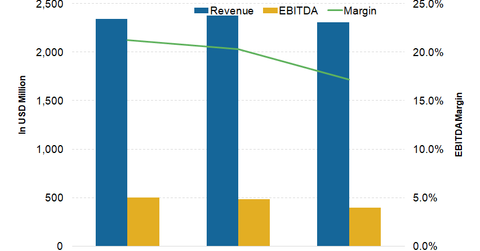How Analysts View Cleveland-Cliffs’ Earnings for 2017 and Beyond
In this article, we’ll discuss analysts’ projections for Cleveland-Cliffs (CLF). Investors should note that drivers for CLF are quite different from those of its seaborne peers.
Jan. 18 2018, Updated 7:30 a.m. ET

CLF’s earnings drivers
We discussed the revenue and earnings drivers for seaborne iron ore miners BHP Billiton (BHP), Rio Tinto (RIO), and Vale SA (VALE) in the previous articles of this series.
In this article, we’ll discuss analysts’ projections for Cleveland-Cliffs (CLF). Investors should note that drivers for CLF are quite different from those of its seaborne peers, mainly because it has limited exposure to the seaborne iron ore trade through its Asia-Pacific division. Most of its earnings are tied to the US steel market (SLX).
Currently, US steel imports and US steel prices are the major factors affecting Cliffs’ estimates.
Analysts’ revenue projections for CLF
Analysts expect Cleveland-Cliffs to report revenue of $2.3 billion in 2017, which would imply a rise of 11.1% YoY (year-over-year). Slightly higher US volumes and higher US steel prices are expected to be the main drivers of this growth.
Analysts’ revenue estimates have seen several changes during the last year. The changes have come about to reflect the company’s changing outlook and guidance. Cliffs downgraded its US volume guidance from 19 million tons to 18.5 million tons to reflect lower nominations from one of its customers. Its revenue growth is expected to be muted in 2018 and 2019 at 1.5% and -2.8%, respectively.
EBITDA estimates
Analysts expect Cliffs’ EBITDA (earnings before interest, tax, depreciation, and amortization) to come in at $497.5 million in 2017. Along with the company’s revenue, this estimate has also seen several downgrades in-line with its changed guidance.
CLF downgraded its EBITDA guidance from $850 million to $700 million in 1Q17, and in its 2Q17 results, it further downgraded its guidance to $650 million. In its latest results, the company stopped providing guidance. Its implied margin for 2017 is still high at 21.2% compared to 16.9% in 2016.
These estimates are expected to taper down going forward—to 20.3% in 2018 and 17.1% in 2019.
